
AI helpers have rapidly changed the way we approach productivity in today’s fast-moving work environment. What was once considered a futuristic idea is now a practical necessity. From managing schedules and tasks to generating documents, writing reports, and transcribing meetings, these intelligent tools handle time-consuming responsibilities that used to require hours of manual work.
This article highlights the top-rated AI helper platforms available today. We’ll break down their key features, strengths, and the types of tasks they’re best suited for. Whether you’re a solo business owner, part of a remote team, or leading a large organization, this guide will help you find the right AI-powered tool to streamline your workflows and improve how you work.
TL; DR – Top AI Helpers
- FuseBase – AI workflow automation with branded client portals
- Zapier – No-code cross-app workflow automation
- ClickUp – Project management with built-in AI assistance
- Synthesia – Text-to-video creation with AI avatars
- Motion – AI-powered smart scheduling and time blocking
- Fireflies.ai – AI meeting transcription and summaries
Why Are AI Helpers Essential in 2025
AI helpers, also known as AI assistants or digital automation agents, are intelligent platforms designed to automate, streamline, and optimize repetitive and complex workflows. They operate across different software ecosystems, integrating with existing tools to enhance productivity without requiring significant technical knowledge from users.
As business ecosystems become more data-heavy and interconnected, the demand for efficiency, reduced human error, and faster decision-making is growing exponentially. Teams are expected to do more with fewer resources, often while operating remotely or across global time zones. AI helpers step in to reduce these operational burdens. They handle time-consuming administrative work, offer real-time insights, manage communications, and make day-to-day operations smoother and more accurate.
Why Automate Daily Tasks with AI Helper
Automating daily tasks with an AI helper brings countless benefits that enhance overall productivity. By using AI tools to manage routine activities, individuals can focus their time and energy on more creative and strategic endeavors. This shift not only increases efficiency but also allows for a more fulfilling work experience. For example, AI assistants can handle scheduling, data entry, and even social media posts, freeing up significant time for users. The ability to effectively streamline these processes is a game-changer in both personal and professional contexts.
Furthermore, AI helpers can refine workflows by analyzing user habits and preferences, tailoring their functions to meet specific needs. This level of personalization creates a unique user experience, making tasks more manageable and enjoyable. The potential to generate insights from data through AI also empowers individuals to make informed decisions quickly. By embracing automation, users can transform their daily routines and ultimately achieve a higher level of productivity.
Top 6 AI Helper Tools
When it comes to selecting the right AI helper, understanding the features and functionalities of various platforms is essential. Here, we explore some of the top-rated AI tools available in the market today. From workflow automation to content creation, these AI systems are designed to assist users in various tasks, ultimately enhancing productivity and creativity.
1. FuseBase – Best for Advanced Workflow Automation and Client Portals
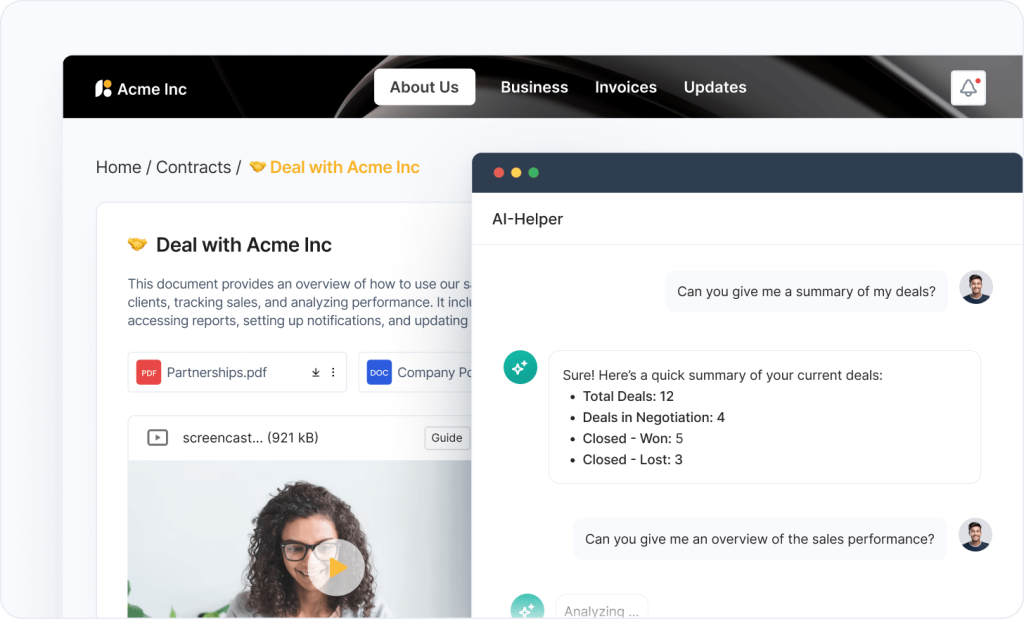
FuseBase offers a comprehensive no-code platform that combines AI-powered automation with smart client collaboration. Designed for teams that manage internal operations and external relationships, FuseBase allows users to build dynamic workflows using AI Agents, conditional triggers, and automated content generation. These agents can write, summarize, or respond to prompts based on real-time context, making them invaluable for streamlining client communication and internal processes. With AI-triggered automations based on file uploads, form responses, or status changes, FuseBase transforms repetitive actions into intelligent, self-operating routines.
Key Features:
- AI Agents for writing, document summarization, and automated insights
- File and form-based automation triggers
- Fully customizable branded client portals
- Embedded documents, shared folders, and secure permissions
- Visual workflow editor for building end-to-end processes
Pros:
- Incredibly flexible and scalable
- Ideal for teams working with clients, documents, and multi-step processes
- Strong AI content generation and process orchestration
Cons:
- May require initial onboarding for complex workflows
Best Use Cases: Proposal generation, onboarding sequences, project handoffs, collaborative review workflows
🚀 Example of how AI Agents transform your work:
2. Zapier – Best for Connecting Apps with Automation Zaps
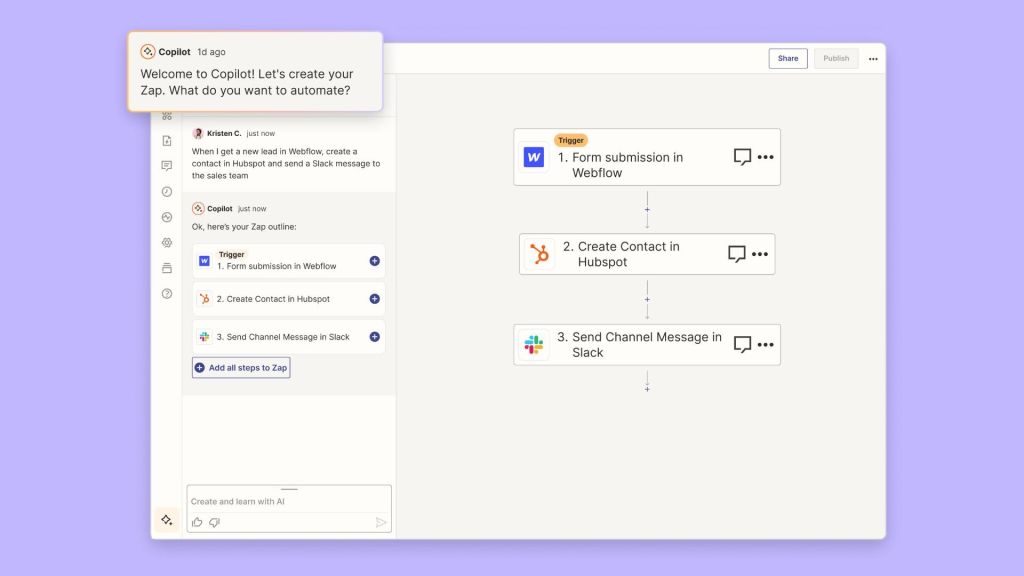
Zapier is one of the most recognized names in automation. It enables users to connect more than 7,000 apps through customizable workflows known as “Zaps.” These workflows can be set to trigger automatically when certain conditions are met, making it a powerful tool for managing repetitive cross-platform tasks without code. It’s intuitive for beginners yet powerful enough for growing businesses looking to automate multistep processes.
Key Features:
- Trigger-to-action workflows with optional filters and delays
- AI-enhanced chatbot tools and agent scripting
- Native and third-party AI integrations
- Extensive integration library (7,000+ apps)
Pros:
- Simple setup for non-technical users
- Robust community and documentation
- Affordable entry-level plan
Cons:
- Lacks advanced AI reasoning or logic building
- Complex automations require multi-tier plans
Best Use Cases: Lead capture and follow-up, automated CRM updates, social posting workflows
3. ClickUp – Best for AI-Enhanced Project Management
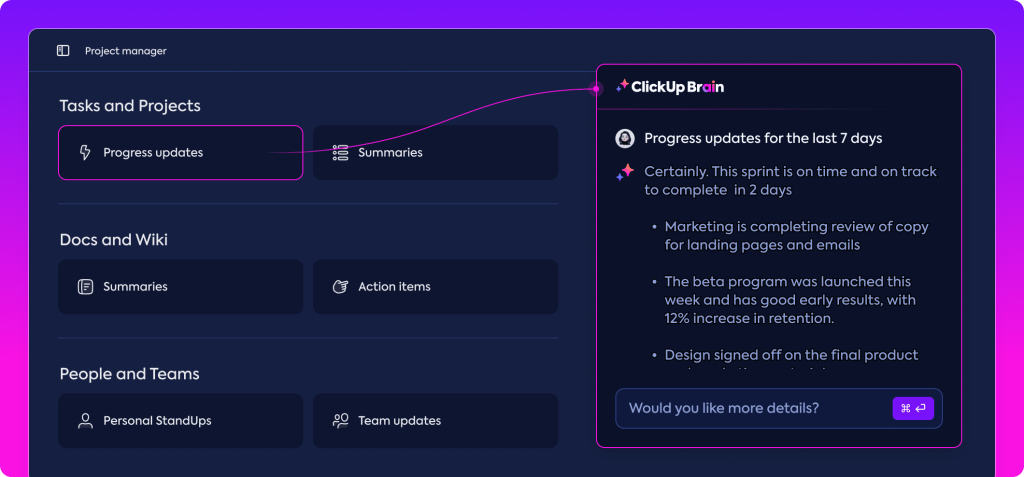
ClickUp is a comprehensive productivity platform that covers tasks, docs, goals, whiteboards, and more. With its integrated AI assistant, ClickUp becomes a central hub where teams can collaborate on content, plan work, and automate repetitive project tasks.
Key Features:
- AI helper for task descriptions, brainstorming, and meeting recaps
- Docs, whiteboards, chat, and built-in dashboards
- Highly customizable project templates and automations
Pros:
- Great for end-to-end project visibility
- Strong integration with file storage and calendars
- Built-in templates and scalable structures
Cons:
- Complexity may overwhelm individual users
- AI and some automations are only available on paid tiers
Best Use Cases: Product planning, content strategy, OKR tracking, executive collaboration
4. Synthesia – Best for AI-Generated Video Content
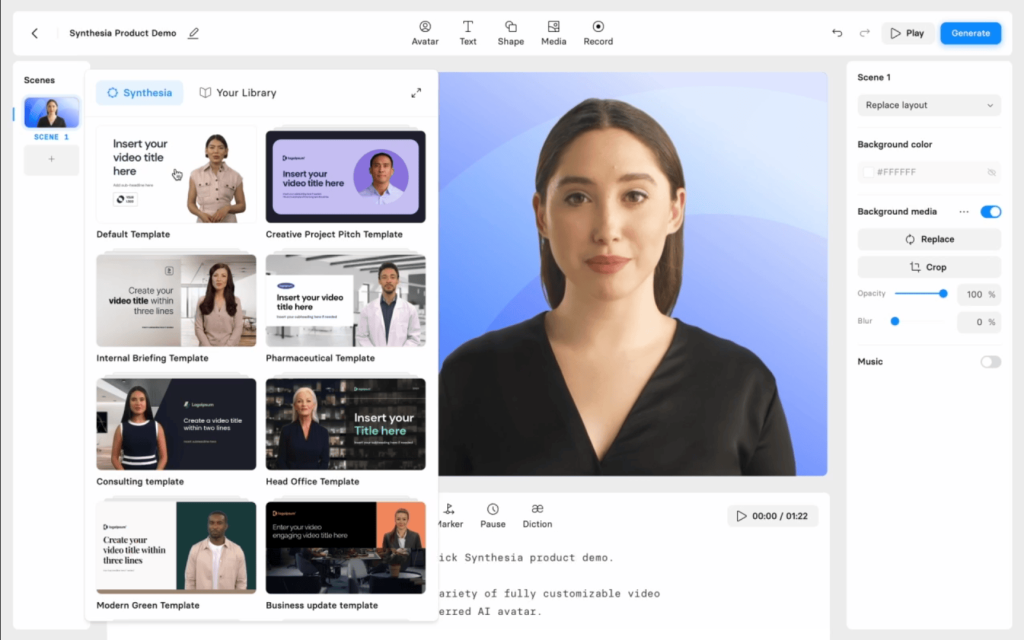
Synthesia offers an AI-powered video creation platform that allows users to create professional-quality videos without cameras or studios. With customizable avatars and support for over 140 languages, it’s ideal for organizations looking to scale training, onboarding, or product tutorials.
Key Features:
- Text-to-video generation with customizable AI avatars
- Script localization and voice synthesis
- Template support for training, explainer, and presentation formats
Pros:
- Scales video content without cameras or studios
- Easily update videos with minimal edits
Cons:
- Limited functionality outside of video workflows
- Custom avatars may incur additional costs
Best Use Cases: Training videos, product walkthroughs, cross-cultural onboarding
5. Motion – Best for AI Calendar Scheduling and Time Blocking
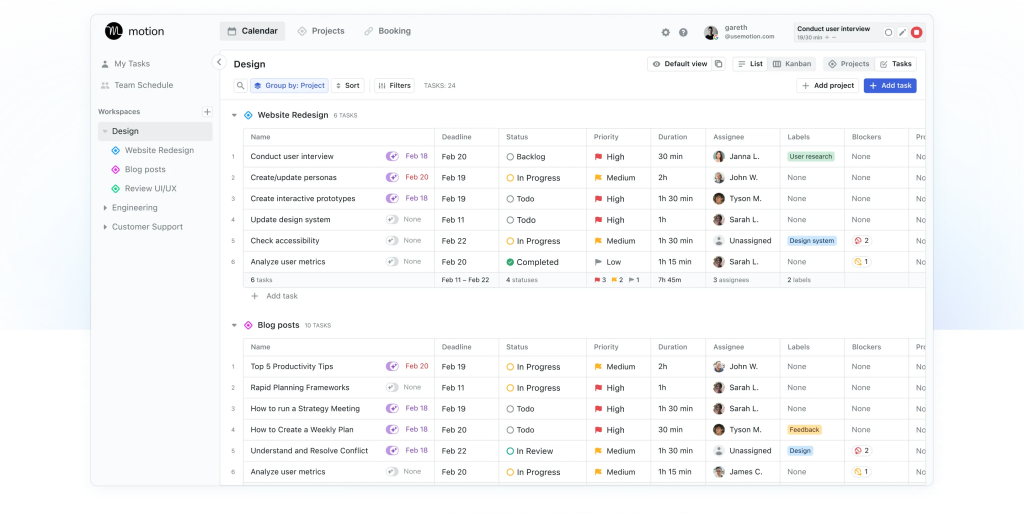
Motion is designed to help busy professionals manage their schedules using AI. By integrating your to-do list, project deadlines, and calendar into a unified planning system, Motion ensures you never miss a task or meeting again.
Key Features:
- Smart calendar auto-population based on priorities
- AI-driven task deadlines and rebooking suggestions
- Syncs with project tools, CRMs, and calendars
Pros:
- Reduces decision fatigue when planning
- Keeps team schedules aligned and balanced
Cons:
- Primarily valuable for calendar-driven workflows
- Requires consistent use for full benefit
Best Use Cases: Executive time blocking, priority-based task routing, meeting automation
6. Fireflies.ai –Best for AI-Powered Meeting Summaries
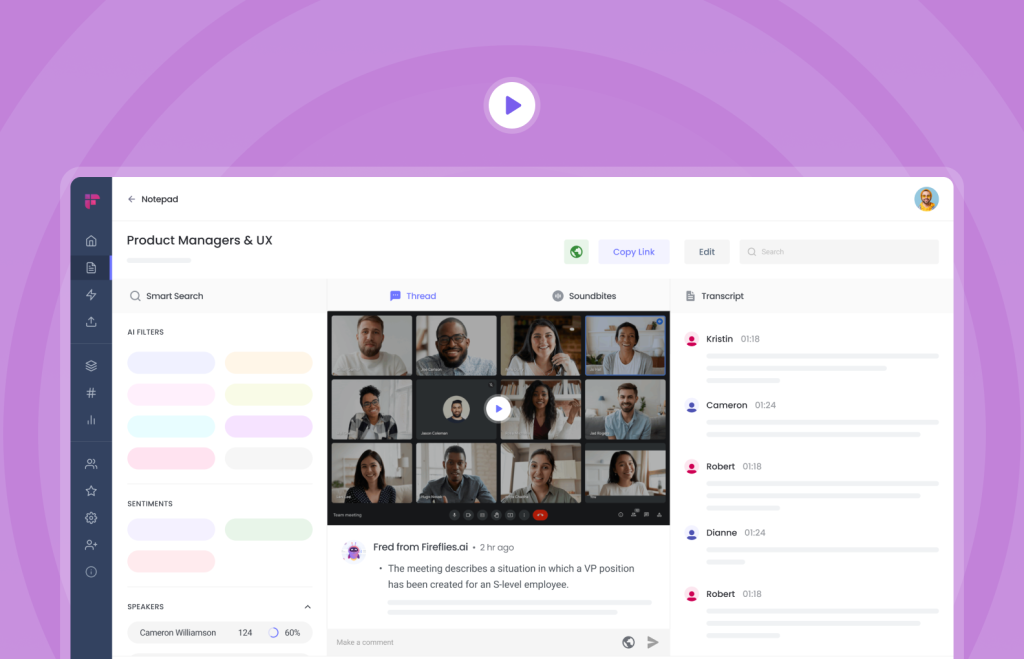
Fireflies.ai is a meeting assistant that joins video calls, records the conversation, transcribes the dialogue in real time, and provides searchable summaries. It is especially valuable for remote teams and sales organizations where accurate meeting notes are critical.
Key Features:
- AI transcription and searchable audio records
- Action item extraction and summary notes
- CRM and project management integrations
Pros:
- Eliminates the need for manual notetaking
- Increases accountability and follow-through
- Accessible via browser, desktop, or mobile
Cons:
- Focused solely on meetings, not broader workflows
Best Use Cases: Sales calls, product demos, internal check-ins, customer onboarding
🚀 Another example of AI that transforms how businesses work:
Final Thoughts
AI Helpers are revolutionizing how we approach daily operations, enabling both individuals and teams to operate with greater clarity, speed, and efficiency. Whether you’re automating email sequences, coordinating client projects, optimizing time management, or generating multimedia content, AI platforms provide the infrastructure for scalable, intelligent workflows.
Among the tools reviewed, FuseBase stands out as the most powerful all-in-one solution, offering a seamless combination of AI agents, automation triggers, and flexible client collaboration tools. However, depending on your specific workflow—whether it’s meetings, scheduling, document editing, or app integration—each platform reviewed brings something valuable to the table.
As AI continues to evolve, these tools will only become more intuitive, more powerful, and more essential. Start integrating one (or several) into your workflow and experience the benefits of intelligent automation firsthand.
